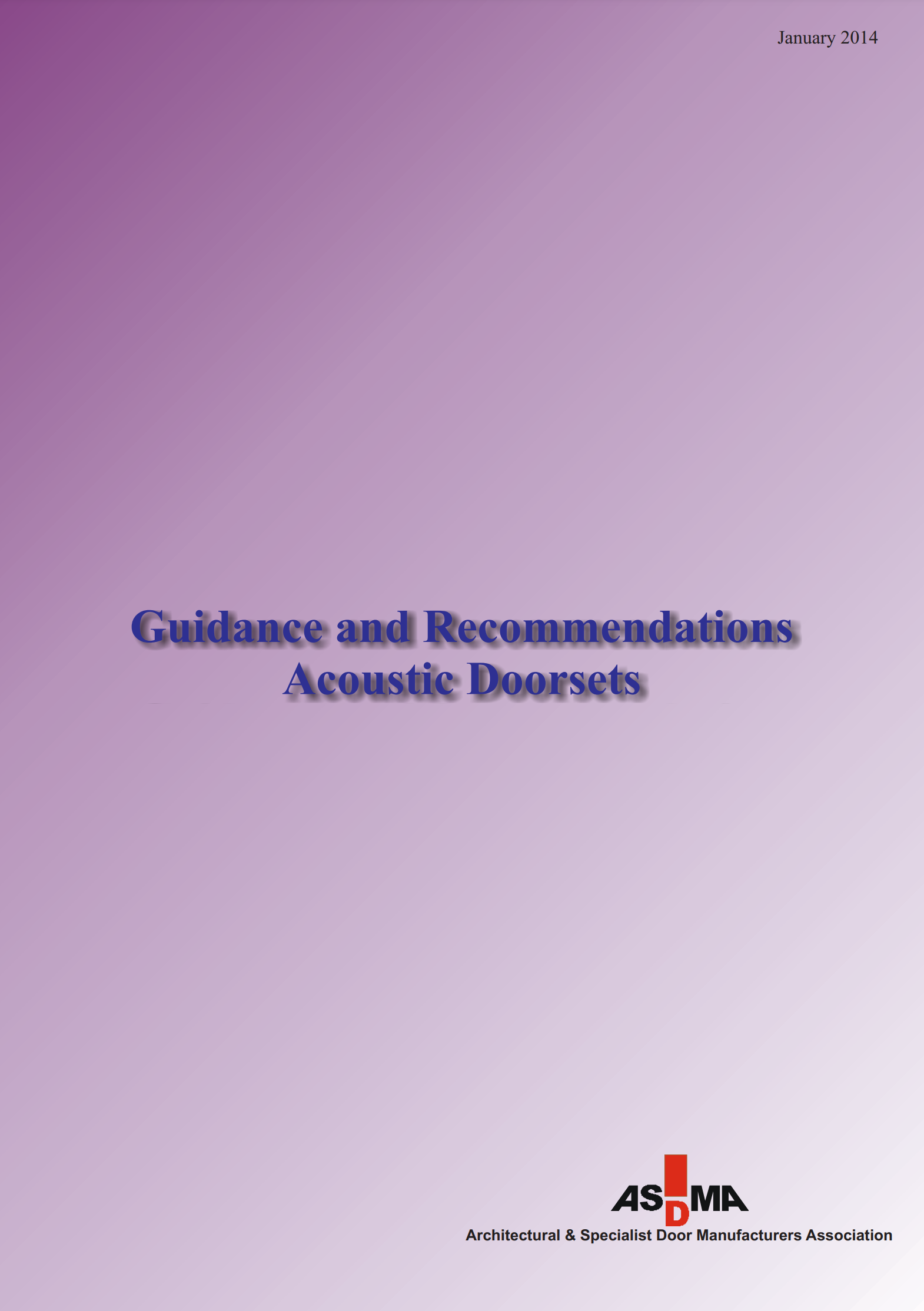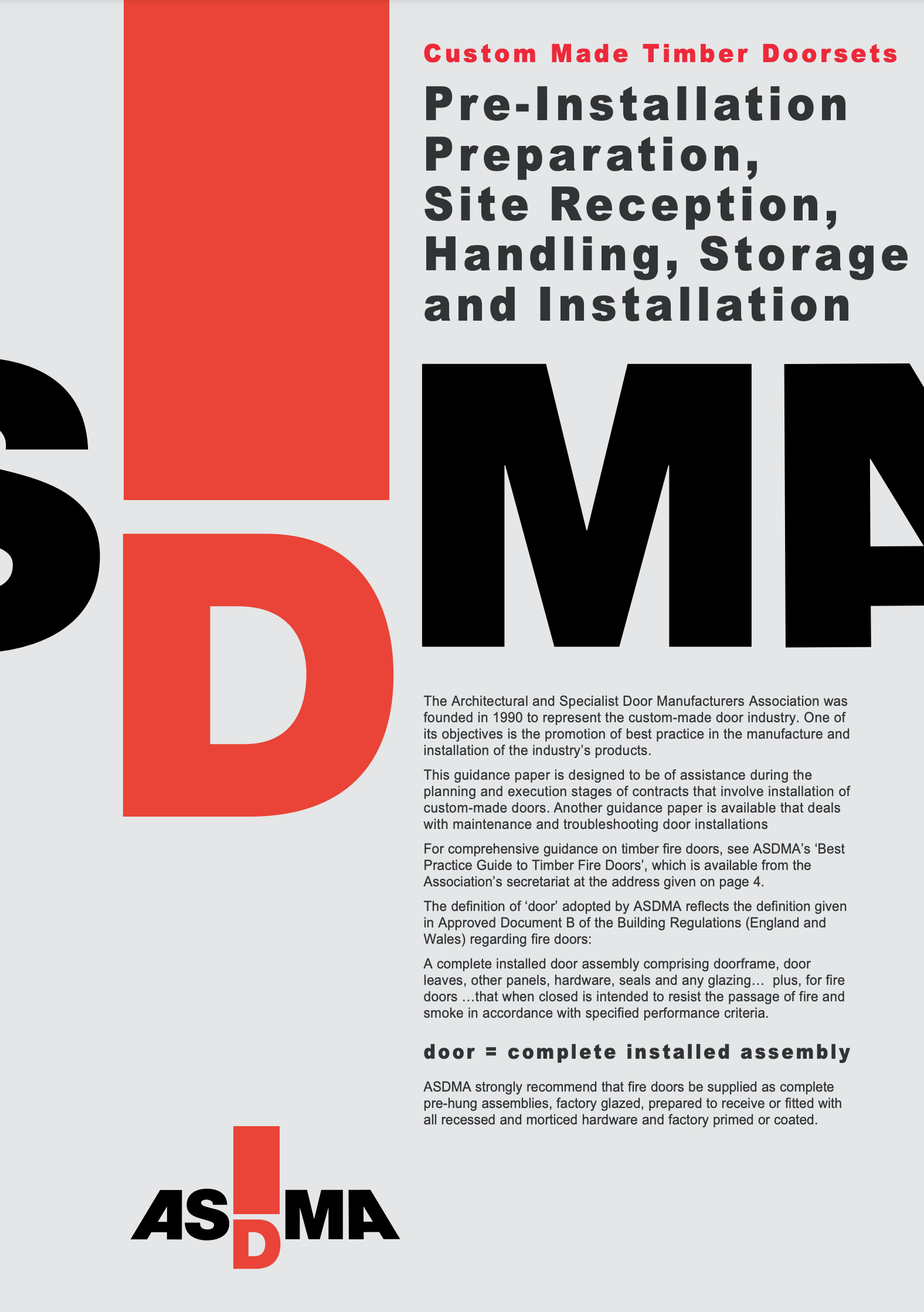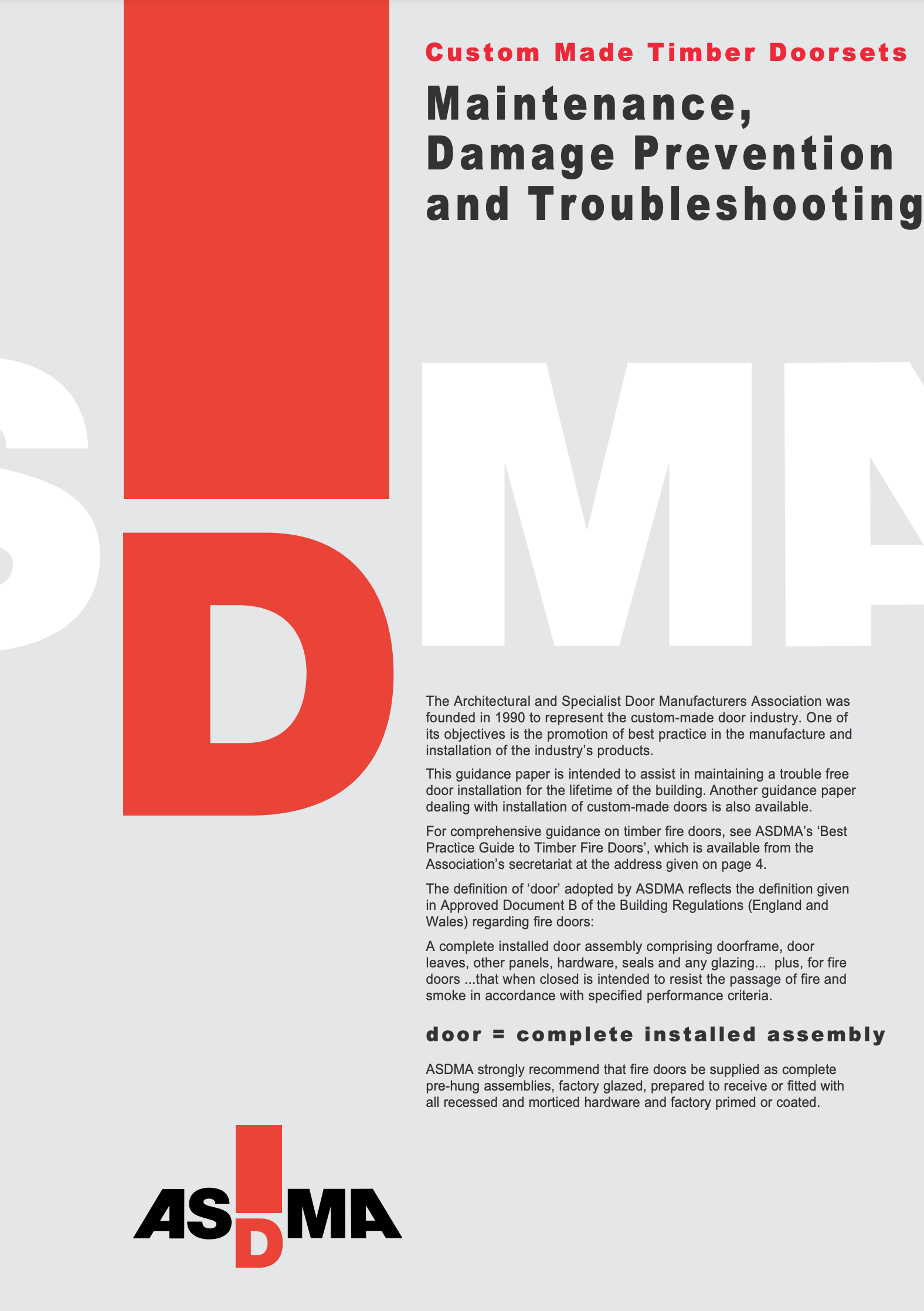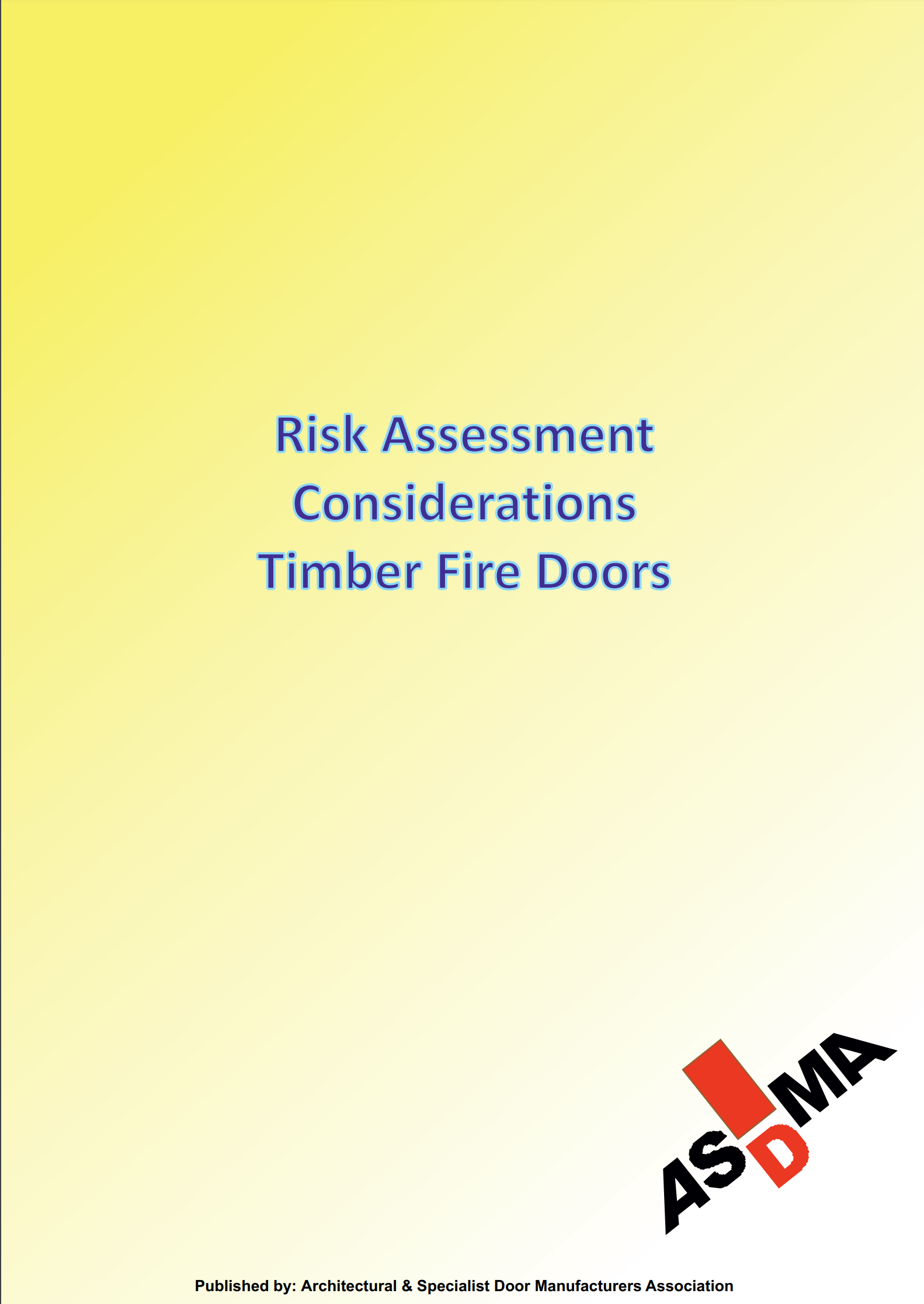ASDMA's guide to Risk Assessment Considerations for Timber Fire Doors provides advice and guidance to take into account in the care, maintenance and risk assessment of timber fire and smoke control doors.
It gives a brief background to regulations and testing procedures and sets out to identify main factors that can potentially affect aspects of performance in fire conditions. It draws attention to considerations and required knowledge when undertaking care and maintenance work or when carrying out risk assessments.
The actions to be taken by those with responsibilities and duties under the provisions of fire safety legislation including risk assessments will vary according to conditions that apply in each particular case. The function of timber fire doors is important in securing protected escape. This document therefore seeks to help by providing pointers to a number of key considerations which may well need to be followed up by further specialist support if initial inspections raise questions regarding door condition.
Target Audience
-
Responsible and Competent Persons under the Regulatory Reform (Fire Safety) Order 2005
-
Risk assessors, fire safety and facilities managers
-
Fire door installers
-
Persons approving fire door installations
-
Those responsible for ongoing site maintenance
Download this Guide










